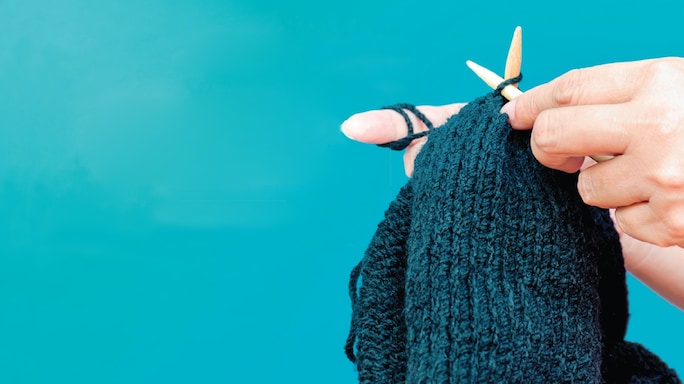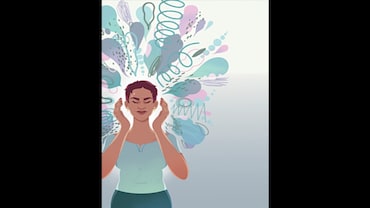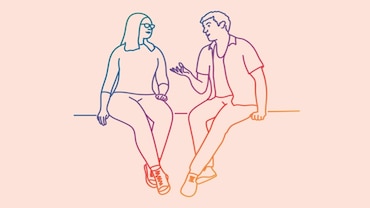- HOME
- /
- Better Living
- /
Active Hands,Calm Minds
How crafts like knitting can help us deal with stress
 Getty images
Getty images
The cliche of a knitter is a white-haired lady—possibly one who also solves murders, if you’re an Agatha Christie fan. But in the 1940s, young male Royal Air Force pilots wielded needles as they waited for their next mission. Wartime pilots crashed a lot and ‘lap crafts’—like knitting, embroidery and beadwork—helped rebuild dexterity in wounded limbs while also helping to settle wounded minds. They were the cornerstone of early occupational therapy.
Today, millions of people around the world employ these same techniques. “They are entwined with our mental health,” says Janine Smith. Along with Deb McDonald, she co-owns Skein Sisters, a store in Sydney, Australia, that sells supplies for knitting and crocheting. “I know that if I haven’t knitted for a few days, I re-ally miss it. It’s like meditation.”
Research supports Smith’s statement. Physiotherapist Betsan Corkhill and occupational therapist Jill Riley were part of a team from Cardiff University in the United Kingdom that, 10 years ago, surveyed more than 3,500 knitters and found that the more frequently people knitted, the calmer and happier they felt.
Or, as McDonald puts it, “That rhythm of making stitch after stitch is like deep breathing. It’s a flow where you don’t have to stress about it, you’ve got the rhythm happening.” ‘Flow’ is a concept first named by psychologist Mihaly Csikszentmihalyi. As he wrote in his book Flow: The Psychology of Optimal Experience, “The best moments in our lives are not the passive, receptive, relaxing times. The best moments usually occur if a person’s body or mind is stretched to its limits in a voluntary effort to accomplish something difficult and worthwhile.”
Shauna Richardson knows just how true this is. The artist spent 18 months in a state of flow when she crocheted three seven-metre-long lions for the UK’s 2012 Cultural Olympiad. To complete the task, which required nearly 60 kilometres of wool, she says she had to “zone everything out and sustain a state of mind driven by rhythm and process.”
But smaller projects will also get you there. Even a simple knitting or crochet pattern requires attentiveness to ensure that each stitch is made correctly. And if there’s not enough challenge in the straightforward, you can make additions, from colour changes to textured stitches to highly intricate patterns.
Csikszentmihalyi also describes the opposite to flow. He points out that although people are healthier and grow to be older than in previous generations, they often end up feeling that “their years were spent in anxiety and boredom,” and they feel cut off from satisfying work.
The Cardiff research team found that even though most of the people surveyed were employed, three-quarters of those who knitted three or more times a week felt significantly more able to organize their thoughts and forget their problems. Many respondents described feeling calmer and in a better mood after knitting, and the majority of respondents who suffered from depression “perceived that knitting made them feel happier.” For respondents who suffered from chronic pain, almost nine out of ten said that knitting gave them a sense of accomplishment and a means of coping with their pain.
Interestingly, more than half of those surveyed said that knitting pushed them to develop other skills, like building furniture. Because knitting is so accessible—at its heart it’s two sticks and one stitch—it helps people build confidence in their abilities. After all, if you make a mistake, you can just pull it all out and start again.






